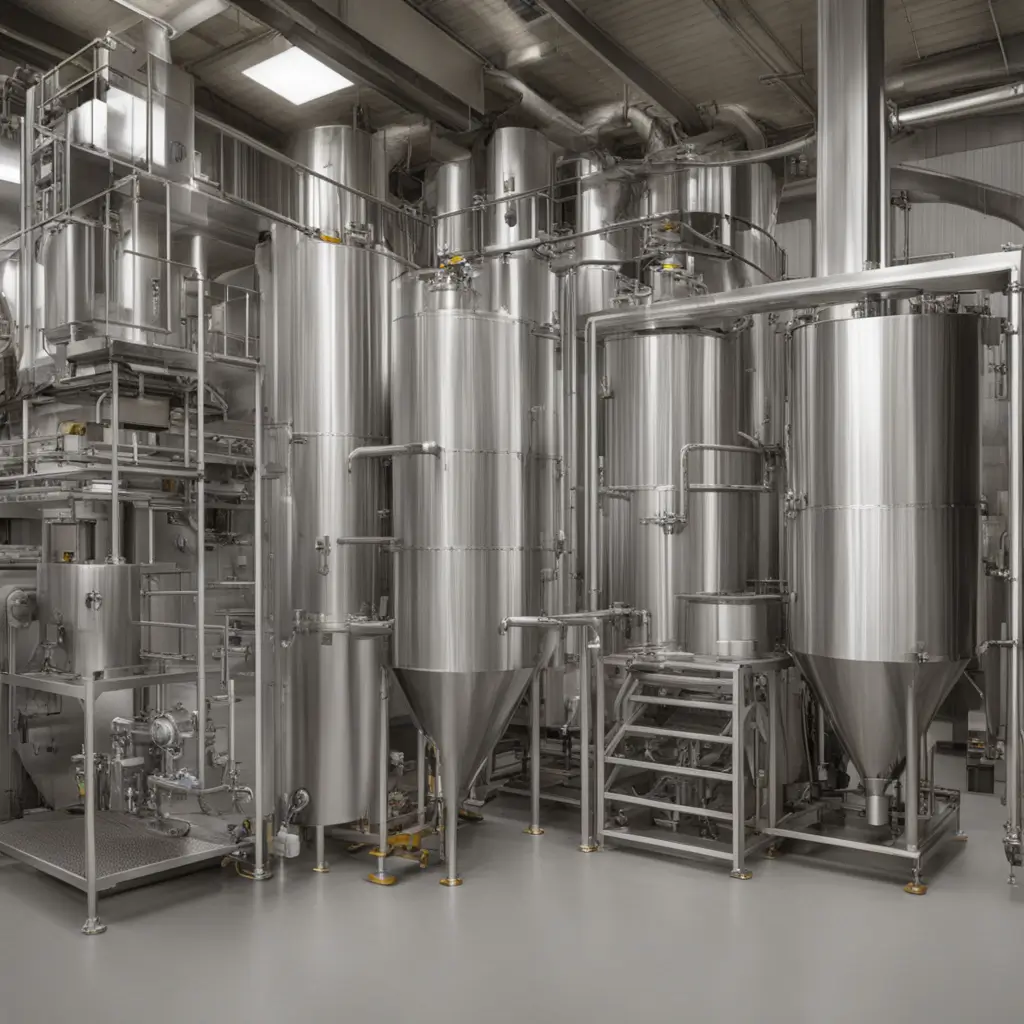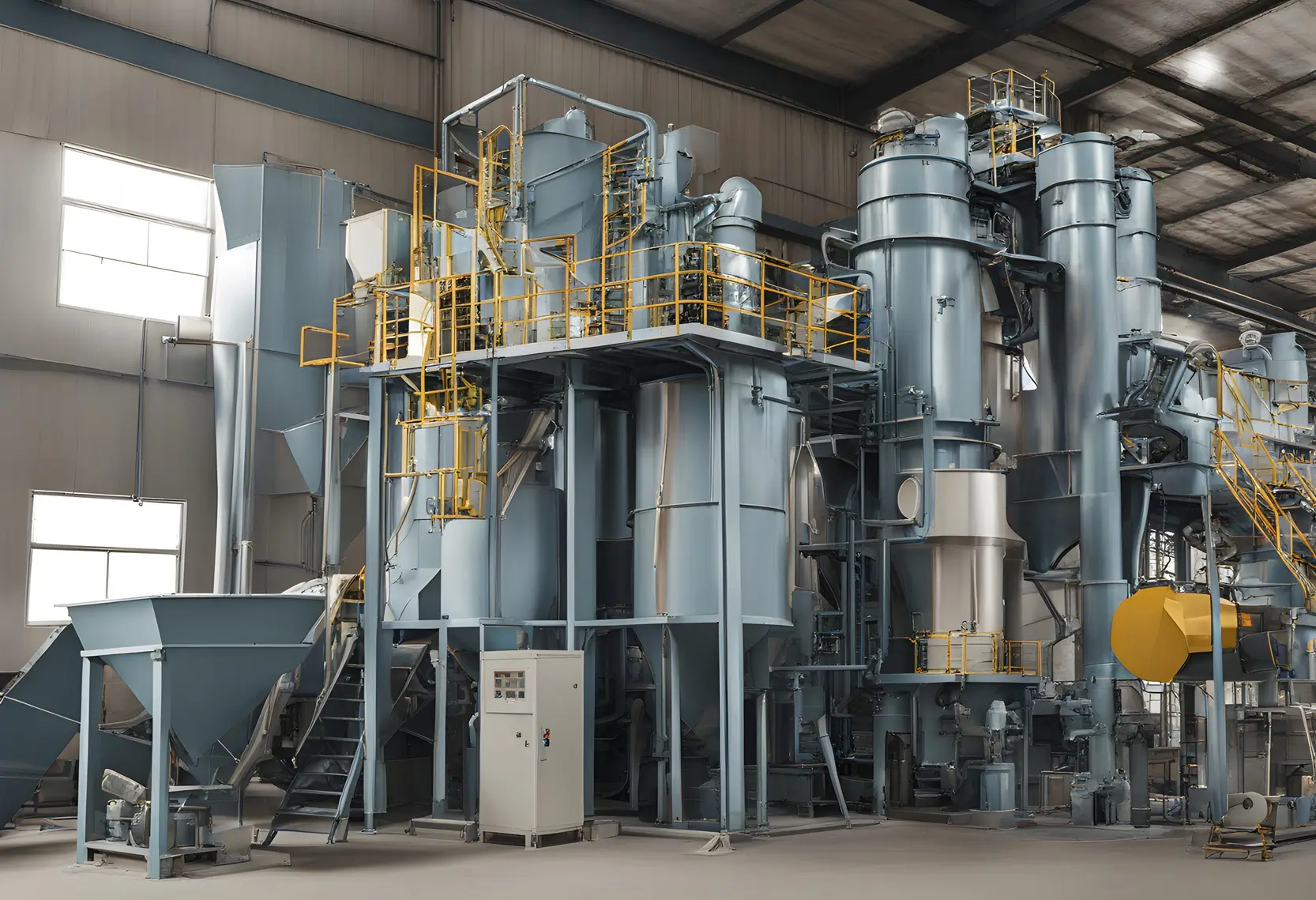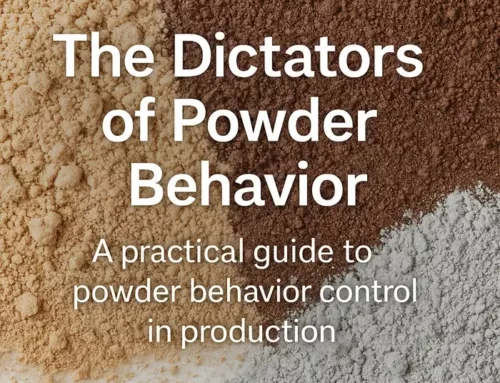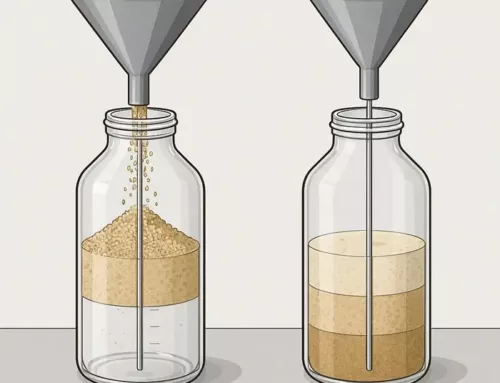Powder Flow Properties Table of Contents

Powder flow is critical in the bulk handling industry, as it directly impacts product quality and operational stability. Distinguishing between unconfined and confined powder flow helps optimize handling and prevent disruptions. Unconfined flow refers to powders moving freely without restrictions, typically observed in chutes and conveyors. In contrast, confined flow occurs within storage containers like bins, silos, and hoppers, where container walls restrict movement and create resistance that affects the flow behavior.
By understanding these distinctions, operators can improve efficiency and prevent blockages that may compromise product consistency. For example, achieving stable, unconfined flow allows for predictable behavior, reducing the risk of irregular flow rates or stoppages. In confined flow scenarios, analyzing how powders interact with container walls and addressing factors like material buildup is crucial for smooth operations.
Analyzing Confined and Unconfined Flow in Different Storage Conditions
Confined powder flow often takes place in large storage containers, where factors like particle cohesiveness and wall friction play significant roles. In order to examine the behavior of powders stored in big bags, for instance, we employ uni-axial compact strength testing. This method, in turn, provides valuable insights into the compressive strength of the powder, offering essential data for more efficient handling and storage.
For hoppers and silos, we, therefore, analyze flow properties through shear testing, applying various loads to the powder material. This test, as a result, allows us to better understand the stresses acting on particles, which can be critical in preventing common issues like rat-holing, bridging, or funnel flow, all of which lead to uneven discharge rates.
Evaluating Unconfined Powder Flow with Precision
Unconfined powder flow is assessed through two primary methods: flow through an orifice and the use of a Hosokawa powder tester. The Hosokawa powder tester provides a detailed analysis of powder flowability, performing seven mechanical and three supporting measurements. This process assesses how powders transition from static to dynamic states, generating flowability and floodability indices based on standardized criteria developed by R.L. Carr. These indices enable industries to predict behavior and ensure consistency across applications, which is especially important in sensitive manufacturing processes.
Application of Flow Testing Insights
Applying insights from both confined and unconfined flow testing is fundamental in industries where consistent flow behavior is crucial. Moreover, these measurements allow operators to select appropriate handling and storage techniques that are tailored to each powder’s properties, ultimately enhancing overall process reliability. Whether optimizing flow in pharmaceutical applications, food processing, or additive manufacturing, understanding powder flow dynamics can lead to fewer disruptions, improved product quality, and, consequently, safer operations.
Powder Flow Properties and Compaction
Powder Flow Properties – Flowability and Floodability
The angle of repose measures flowability by evaluating a material’s cohesiveness. Compressibility testing highlights the difference between a material’s aerated and packed density; low compression values typically indicate good flowability. The spatula angle reveals the internal friction angle of the bulk powder. Meanwhile, the angle of fall measures how vibration changes the gradient of a powder heap.
Dispersibility assesses the combined effects of fugacity, dusting, and flushing within a powder. The angle of difference, calculated as the gap between the angle of repose and angle of fall, reflects flushing tendencies—a large value signals a high tendency to flush. Additional supporting measurements include aerated bulk density, packed bulk density, and uniformity. Together, these metrics provide valuable indices to evaluate powder flowability and floodability.
A newer technique employs a powder rheometer to measure friction within a powder bed, correlating this with flow properties. These measurements apply to unconfined fixed beds, fluidized beds, and confined conditions, offering insights similar to those from shear testing.







